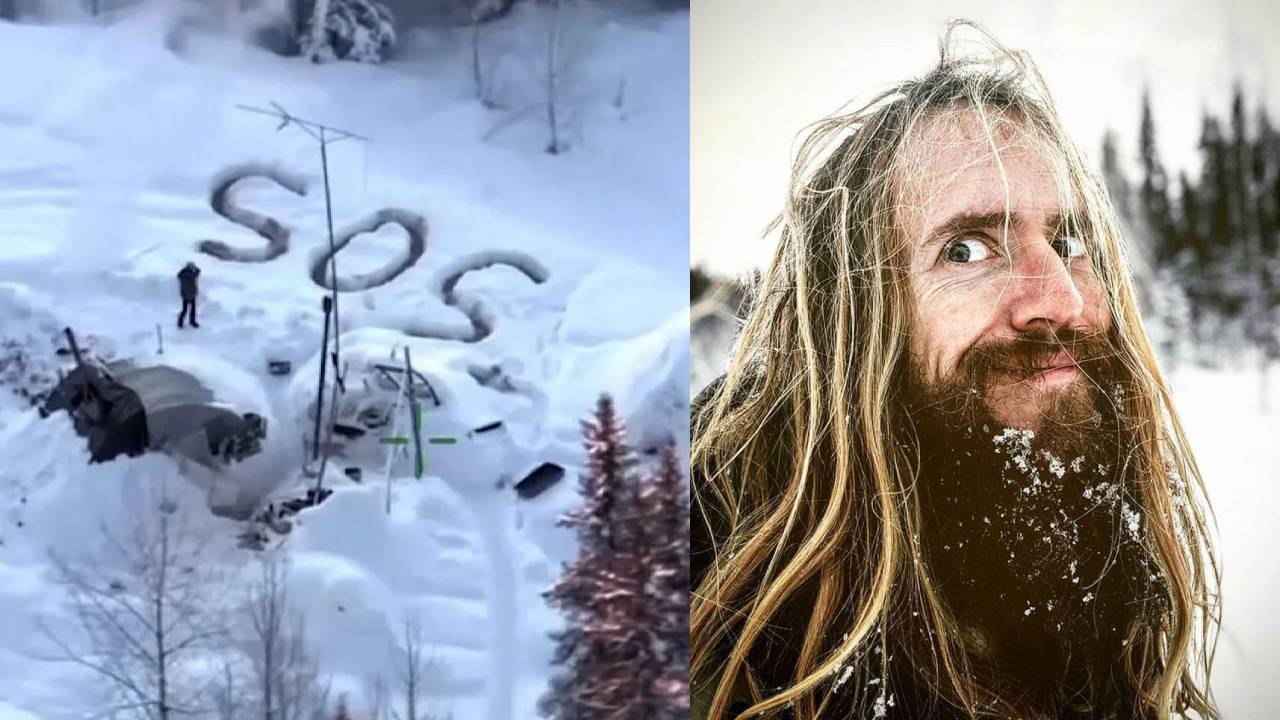
Facing isolation, lack of food, and taking refuge in precarious conditions—anyone hearing these conditions would think we’re talking about a survival movie, but reality always surpasses fiction. Tyson Steele, a 30-year-old American man, survived the frigid temperatures of Alaska.
The man who survived under the ice

On January 9, 2020, authorities discovered a massive SOS sign in the vicinity, next to the remains of a small remote cabin destroyed by a fire.
In some way, Steele managed to subsist by eating canned goods he salvaged from the fire, improvising a rudimentary tent with debris to withstand the freezing subzero temperatures.
The discovery occurred after his concerned relatives requested assistance in locating him. An SOS message written in the snow next to the remains of his home was crucial for the success of the rescue, as seen in the video provided by the Alaska State Troopers, the state police.
In an interview published by the authorities, Steele shared the details of how he fought and survived, along with the events leading to the rescue. According to his statements, he acquired the cabin, constructed with tarps and planks, from a Vietnam War veteran. Located in the remote Susitna Valley, about 32 kilometers northwest of Anchorage, the house became his home since September.
Steele couldn’t pinpoint the exact date of the fire’s onset, presuming it happened around December 17 or 18 when he made a mistake with the wood stove. Despite his efforts, the fire destroyed the cabin, taking his loyal Labrador dog and friend, Phil, with it.
How did he survive?

The survivor described the situation as a war zone, as the fire ignited ammunition and a propane tank near his food supply. Despite throwing snow for hours, he couldn’t save his shelter. Steele managed to retrieve some canned food, although the heat had affected its contents.
He spent the first nights after the incident in a snow cave, and later improvised a basic tent using scraps of tarp around a wood stove. While acknowledging the precariousness of his shelter, it allowed him to stay alive.
With ingenuity, Steele kept the stove burning using tree bark and a candle. He wrote a distress call in the snow with ashes, emphasizing the letters, and created a path to a nearby frozen lake, where he hoped for a possible aerial rescue.
In his account, Steele admitted not being specifically trained for such situations, although he has always enjoyed outdoor activities and learned from online videos. The rescue materialized thanks to the intervention of his relatives, who, concerned about the lack of contact, sought help from the authorities in Alaska.
After this traumatic experience, Steele expressed his intention to reunite with his family in Utah, mentioning the possibility of a dog serving as therapy.
This demonstrates how unforgiving nature can be, and if we don’t have the right knowledge, it’s best not to challenge it. Tyson Steele discovered it in the worst way, from which he barely survived.
